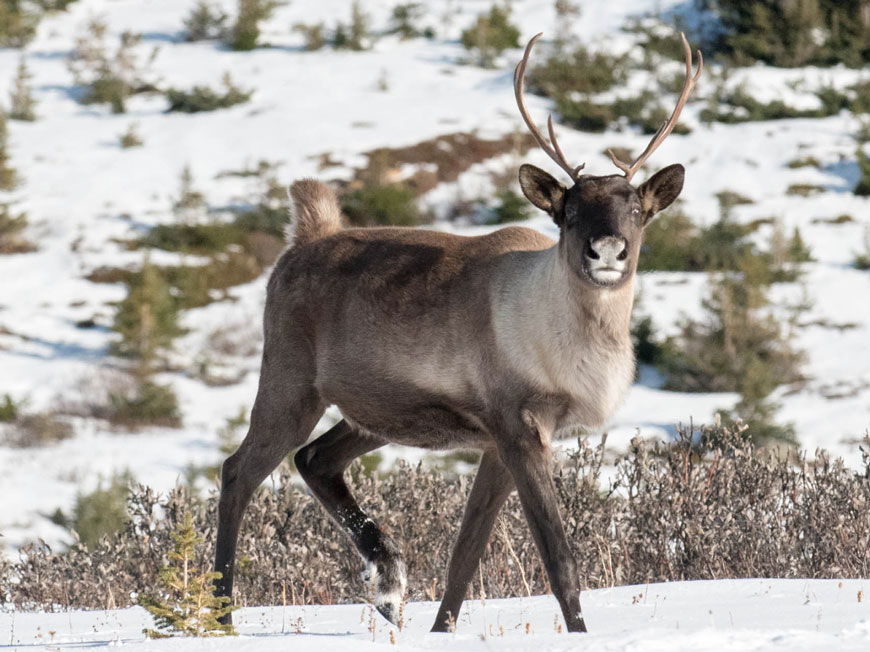
Protecting species
Jasper National Park
On this page
What is a species at risk?
A species at risk is a plant or animal that is in danger of disappearing if something is not done to help it.
Why protect species at risk?
There are billions of species in the world, many of which are not yet known to humans. Protecting the full range of life on earth sustains the health of our planet. By protecting our local species at risk, we are helping to protect global diversity.
How are we protecting species at risk?
All animals and plants are protected inside national parks but species at risk need extra help.
We are helping to recover species at risk by:
- locating and protecting critical habitat
- monitoring populations of at-risk species
- restoring grasslands and open forests that are critical to many species at risk
- taking steps to protect native species from introduced diseases
Species at risk in Jasper National Park
Endangered
Threatened
Special Concern
Species at Risk Act (SARA) Rankings
The Species at Risk Act (SARA) is a federal law to protect Canada’s wild plant and animal species from becoming extinct. It lists species according to a ranking system:
- Extinct
- Gone forever
- Extirpated
- Locally, regionally or nationally extinct, but existing elsewhere in the wild
- Endangered
- Facing imminent extirpation or extinction if nothing is done to reverse the threats
- Threatened
- Likely to become threatened if actions are not taken to reduce biological threats or human impact
- Special Concern
- Sensitive to human activities or natural events, but not endangered or threatened
The bigger picture

Special Concern
Species at Risk Act (SARA) Rankings
The Species at Risk Act (SARA) is a federal law to protect Canada’s wild plant and animal species from becoming extinct. It lists species according to a ranking system:
- Extinct
- Gone forever
- Extirpated
- Locally, regionally or nationally extinct, but existing elsewhere in the wild
- Endangered
- Facing imminent extirpation or extinction if nothing is done to reverse the threats
- Threatened
- Likely to become threatened if actions are not taken to reduce biological threats or human impact
- Special Concern
- Sensitive to human activities or natural events, but not endangered or threatened
The bigger picture

Species at Risk Act (SARA) Rankings
The Species at Risk Act (SARA) is a federal law to protect Canada’s wild plant and animal species from becoming extinct. It lists species according to a ranking system:
- Extinct
- Gone forever
- Extirpated
- Locally, regionally or nationally extinct, but existing elsewhere in the wild
- Endangered
- Facing imminent extirpation or extinction if nothing is done to reverse the threats
- Threatened
- Likely to become threatened if actions are not taken to reduce biological threats or human impact
- Special Concern
- Sensitive to human activities or natural events, but not endangered or threatened

Jasper National Park is part of the Canadian Rocky Mountain Parks, a group of four national parks and three provincial parks, and a UNESCO World Heritage Site. The vast area of these parks provides incredible habitat connectivity that is essential to the survival of many species.
All of the species at risk within Jasper also face threats that are bigger than the borders of the mountain parks-from migratory bird mortality in South America, to global insect declines; from shrinking caribou and grizzly bear ranges outside park boundaries, to disappearing glaciers.
The Multi-species Action Plan for Jasper National Park uses the strategy of “thinking globally, acting locally,” but the success of those local actions depend on national and international responses to the broader driving forces that are threatening these species.
The effects of climate change are high on the list of threats for many of the species at risk in Jasper National Park. While scientists are trying to predict the effects of climate change, we can’t anticipate every detail of how species will adapt to these changes, nor how those changes will ripple throughout ecosystems. In collaboration with Indigenous peoples and academics, Parks Canada is conducting important research within protected areas that will contribute to our understanding of current and future climate change impacts.
The network of protected areas in Canada plays an important role in helping to address the impacts of climate change by protecting and restoring healthy, resilient ecosystems and contributing to the recovery of species at risk.
Learn more
- Date modified :














